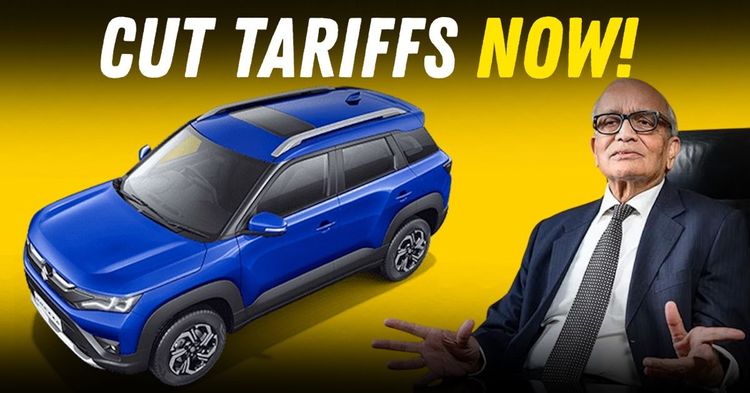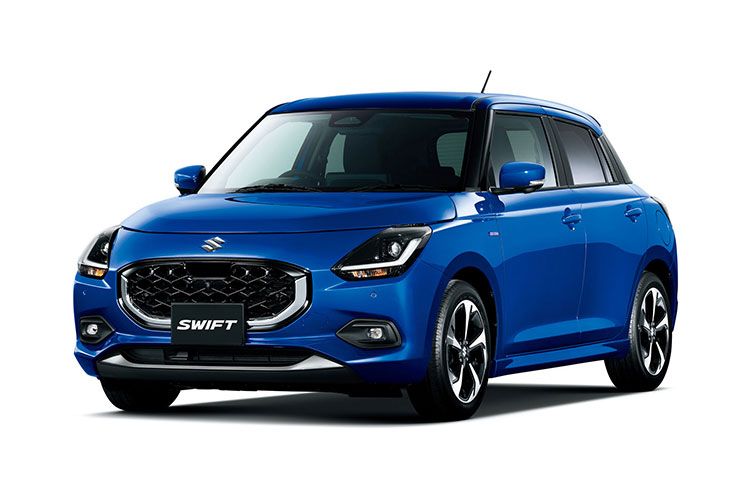Maruti Suzuki: We Still Love Small Cars, And The GST Cut Only Helps Our Case


Maruti Suzuki has underlined that small cars remain at the core of its strategy, even as SUVs take up a larger share of its sales. Managing Director and CEO Hisashi Takeuchi recently stressed that hatchbacks and entry-level models will continue to be central to the company’s line-up.

The comments come at a time when the government has just given small cars (sub-4 meter with petrol engines smaller than 1,200cc) a hefty GST cut. The Government's GST cut on small cars to 18 % (from 28 %) has lowered the tax burden on smaller vehicles. This will potentially give the segment a much-needed lift.

Over the past five years, the balance of the market has shifted dramatically. SUVs now account for more than half of all passenger vehicle sales. Hatchbacks and compact sedans, once the volume drivers, have been steadily losing share. Rising input costs, stricter safety and emissions regulations and higher ownership costs have made small cars less affordable for the very buyers they are designed for.
Maruti, more than any other company, has felt this pressure. The Alto, Wagon R and Swift have been household names for two decades, but volumes have slipped in the face of shifting buyer preference and rising prices. Industry data shows that small car sales fell by almost 9 per cent in the last financial year even as overall car sales grew slightly.

Takeuchi’s remarks make clear that Maruti does not plan to abandon the entry-level segment. He described small cars as the company’s foundation and essential for keeping personal mobility within reach of first-time buyers. Even though SUVs are now the growth engine, Maruti sees hatchbacks as critical for maintaining market leadership and securing long-term volumes.
The company continues to update and refresh its small car portfolio. The latest generation Swift is on sale with upgraded safety and equipment. The Alto K10 and Wagon R have also been revised in recent years to meet new crash and emission norms. Models like the Celerio and Baleno continue to target buyers moving up within the hatchback space.

The government has acted on the proposal to rationalise GST rates for vehicles. One option discussed was a lower slab for compact and affordable cars, and the government has walked the talk and cut GST on small cars.
Previously, small cars used attract a 28 per cent GST plus cess depending on engine size, which pushed up prices for budget-conscious customers. The cut in the tax rate (implemented from 22nd September) will reduce on-road prices by several thousand rupees, improving affordability for first-time buyers.
For Maruti, such a move would be especially helpful. The company’s volumes are still skewed toward smaller cars, and even a modest improvement in affordability could translate into significant gains. Takeuchi noted that a GST cut would provide relief to the entry-level market, which has been under pressure from rising costs.

While emphasising the importance of hatchbacks, Maruti is not ignoring the SUV wave. The company now sells multiple models in this space, from the compact Brezza to the recently launched Victoris in the midsize segment. Together with the Grand Vitara and Fronx, these SUVs account for a growing share of Maruti’s sales.
Takeuchi admitted that SUVs are now more than half of the company’s volumes, but he stressed that this does not change the role of small cars. Even if their share shrinks, the absolute numbers are large enough to remain significant. For Maruti, the strategy is to keep both sides of the portfolio healthy, with SUVs delivering growth and small cars anchoring the base.
The entry-level car market is not just about sales volumes. It has broader implications for mobility and access. For many households, a small car is the first step into private transport, offering flexibility that two-wheelers cannot match. If these cars become unaffordable, entire segments of buyers could be priced out of the market.
Maruti’s insistence on continuing to invest in hatchbacks is therefore not only a business decision but also one that affects accessibility. With the big GST relief, the company is positioning itself to capture demand as prices ease.